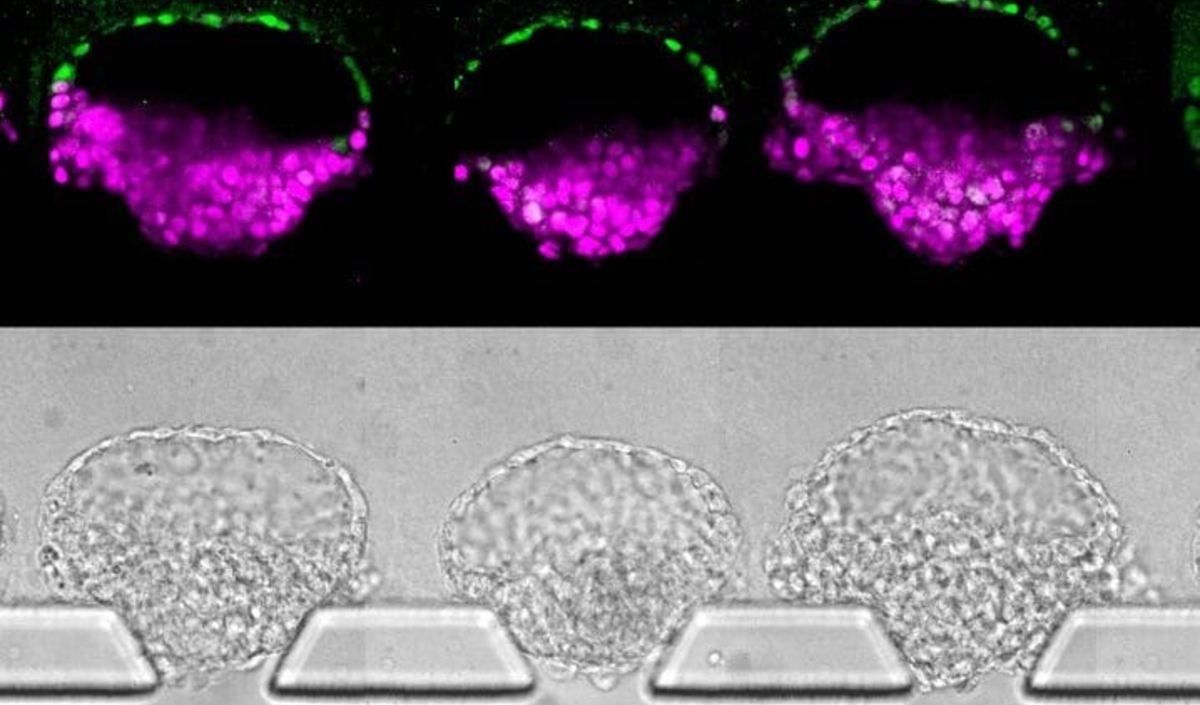
‘Artificial embryos’ created at the University of Michigan
‘It’s uncanny how much it is like a human embryo’
Embryoids growing in the device / University of Michigan
American scientists are creating embryo-like structures which can be used for studying embryonic development, for fertility drug testing and for genetic research. Earlier this week researchers from the University of Michigan reported in the journal Nature that they have turned induced pluripotent stem cells into models of human embryos in a micro-fluidic environment.
They are able to make hundreds of these “artificial embryos” successfully. “It’s uncanny how much it is like a human embryo,” says Alfonso Martinez Arias, a geneticist at the University of Cambridge, told MIT Technology Review. “This one is particularly spectacular.”
“Our stem cell structures that mimic embryos can help fill critical gaps in knowledge about early human development, and that could lead to a lot of good,” says the lead researcher Jianping Fu.
“This research could give us a window into the pivotal but barely observable period between two and four weeks after conception. This is a time when many miscarriages happen, and serious birth defects can form. Scientists have even begun to find connections between late-onset diseases and early development. We need to understand these processes better if we’re ever going to develop preventative measures.”
While the University of Michigan researchers are highlighting the benefits for studying fertility and birth defects, the larger question, of course, is whether their techniques can be used to create viable embryos. The “artificial embryos” are being destroyed after four days and do not have all the cell types needed to develop normally. MIT Technology Review comments:
“But scientists believe that it might not be long before they can synthesize embryos in the lab that are almost indistinguishable from naturally created ones. Already, research on artificial mouse embryos has progressed to the point where scientists are transferring them to female surrogates and trying to make live animals, though they haven’t succeeded yet.
“The concern is that if scientists could make human embryos in the lab, someone might use the systems to generate genetically modified people, a dystopian scenario similar to the central hatcheries described in the novel Brave New World.”
Last December, Fu and other published an article in Nature which called for regulation of this type of research, especially banning “the use of stem-cell-based entities for reproductive purposes”. However, the line between viable human embryos and “artificial embryos” is far from clear. Their criterion is the intention of the researcher, not “surrogate measures of the equivalence between the human embryo and a model”.
The distinction is important, especially in the United States, where Federal funding for embryo research is banned under the Dickey-Wicker Amendment.
Michael Cook is editor of BioEdge
Creative commons
https://www.bioedge.org/images/2008images/FB_embryoids_68797.jpg
embryo research
stem cell research
- How long can you put off seeing the doctor because of lockdowns? - December 3, 2021
- House of Lords debates assisted suicide—again - October 28, 2021
- Spanish government tries to restrict conscientious objection - October 28, 2021
